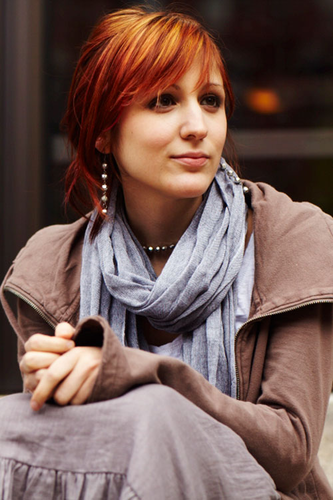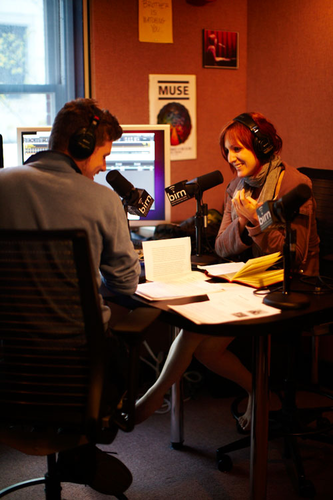Student Profile: Kate Bilinski
Bassist Kate Bilinski spent a year at Fordham College at Lincoln Center studying photography. But a year without music was too much, and she soon transferred to Berklee. Now she's merging her two passions by majoring in electronic production and design, where her projects include multimedia installations, sound design for animation, and 3D virtual museum tours.
Why did you decide to transfer to Berklee?
I wanted to be completely immersed in music. If I was going to do the music thing, I wanted it to be what I would eat, breathe, sleep, and dream about constantly. I figured, like learning a language, you just have total immersion. It's hard. The first semester I thought, did they realize they let me in? But if I was going to do this I was going to do it all the way.
The beautiful thing was I had all my gen eds out of the way, so every single class I was taking was music-based. I was in heaven. Knowing its reputation and knowing that I had the option of doing not just performance. . . . I didn't even know there were that many pockets in the music world.
Why did you choose electronic production and design?
Of all the majors, it's the one that's the most prone to involving multimedia and stretching what you can really do with music and art.
I love that they have us really develop our skills as musicians as well as working with the tech side of things. They make it a self-contained package, so you'll be able to make the music, produce the music, mix the music, and make the plug-ins that you'll be using to edit the music. You come out of here with little nuggets of knowledge in all these different spheres.
What's the final project like?
Our final class is basically an open capstone. You have a mentor that you work privately with, and you kind of have free reign. There are kids that write software, there are kids that do pop albums, there are kids that score. . . . It's just such a diverse major; you can do anything with it.
I really wanted to make my final project a collaboration of both visual and sonic, because I needed to feel like it was a full representation of what I've learned over the last four years. So I'm going to be putting up a projection with surround-sound ambiences to go with that. I call them musical compositions, but it's going to be more of a drawn-out thing, dealing with semiotics and how we decode our communication system, particularly in an urban environment. I'm going to be working with Jitter, Max/MSP programming, to have the audio affect how the imaging works. Neil Leonard is my mentor, and I'm putting it on in his gallery, GASP(Opens in a new window). I'm really excited about it.
Tell me about your Sound Design for Animation class.
We work with Mass Art students. I'm working with Tim Prendergast right now on a joke PSA about ghosts driving cars, which is goofy, but it's fun because it's all this bombastic sound design, crashing cars and screams and engines and ghosts. At the beginning of the semester I did one with this girl Emily, based on a poem. I underscored that and had the poetry read on top of it. We did screenings, and some of them go on to animation film festivals.
Collaboration is almost the number one facet of the class. I'm learning more and more about placement of sound and how it's used, but I still feel like just getting the idea of working with someone—how to exchange ideas, how a visual person works with a sonic person, and really being able to communicate what you're trying to get across—is huge.
And you're doing an internship this semester, too?
I'm working with Public VR, which is kind of a 3D virtual world creation house. They're working with Carnegie Mellon museum on an Egyptian exhibit guided tour. We're creating three-dimensional sound and place ambiances in the actual temple depending on what would typically be there, who would be speaking, how loud they'd be speaking. . . . So we're trying to make it as historically accurate as possible. It would be the same as if you were doing music for any kind of action video game. The music has been fascinating, because it's trying to assimilate what ancient Egyptian music may have sounded like with the instruments that they had. We don't really know anything of the actual sonic value—we've just seen pictures. It's a lot of critical listening in terms of ethnomusicology.


